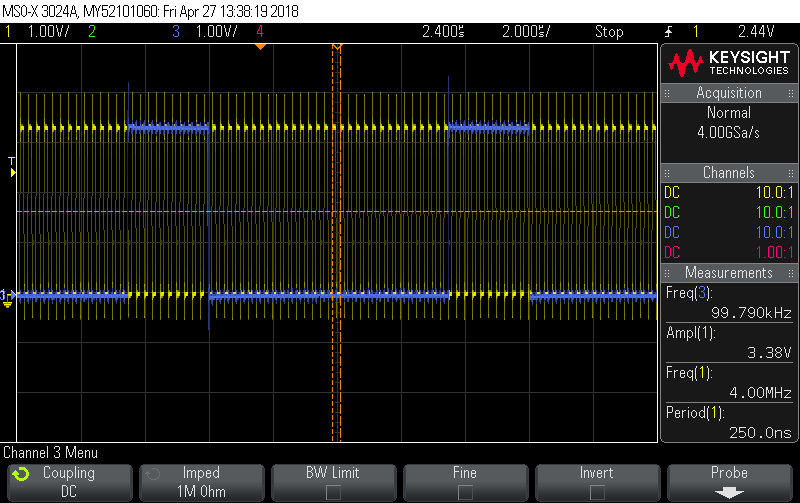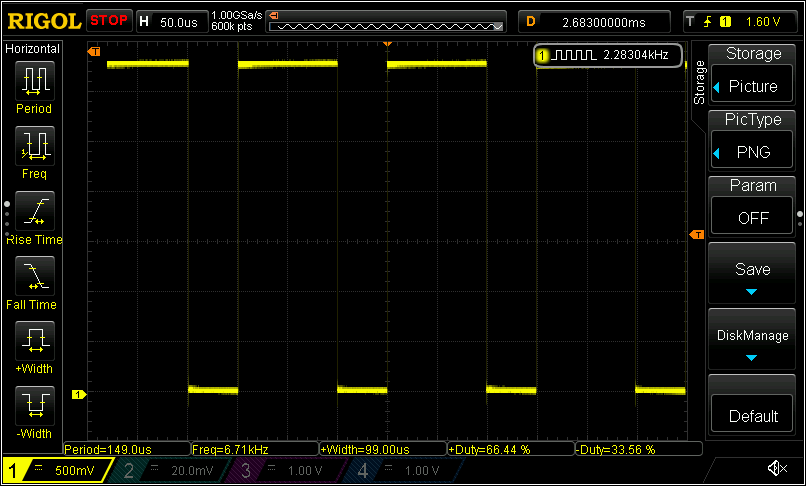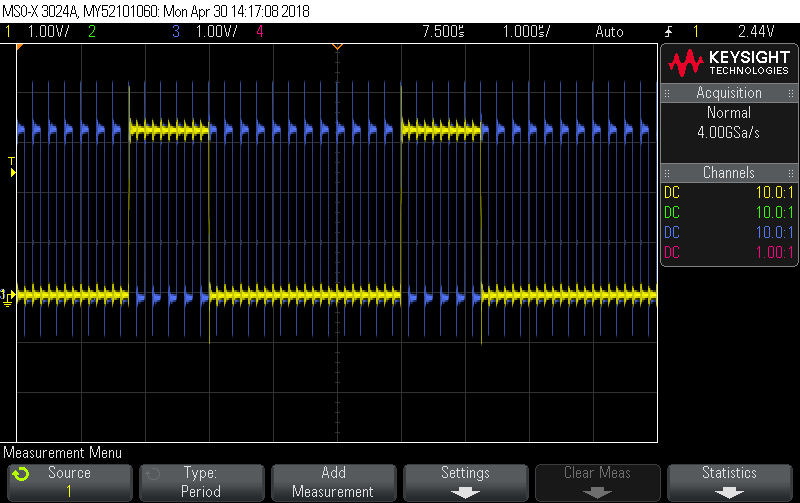Part Number: MSP432P401R
Tool/software: Code Composer Studio
Hi i want to use the MSP432 PWM in burst mode, is this possible?
If not, is there any IC from TI that can make me a Square Wave in Burst mode?
I need to set the amount of square in Burst and the distance time from one to the other.






